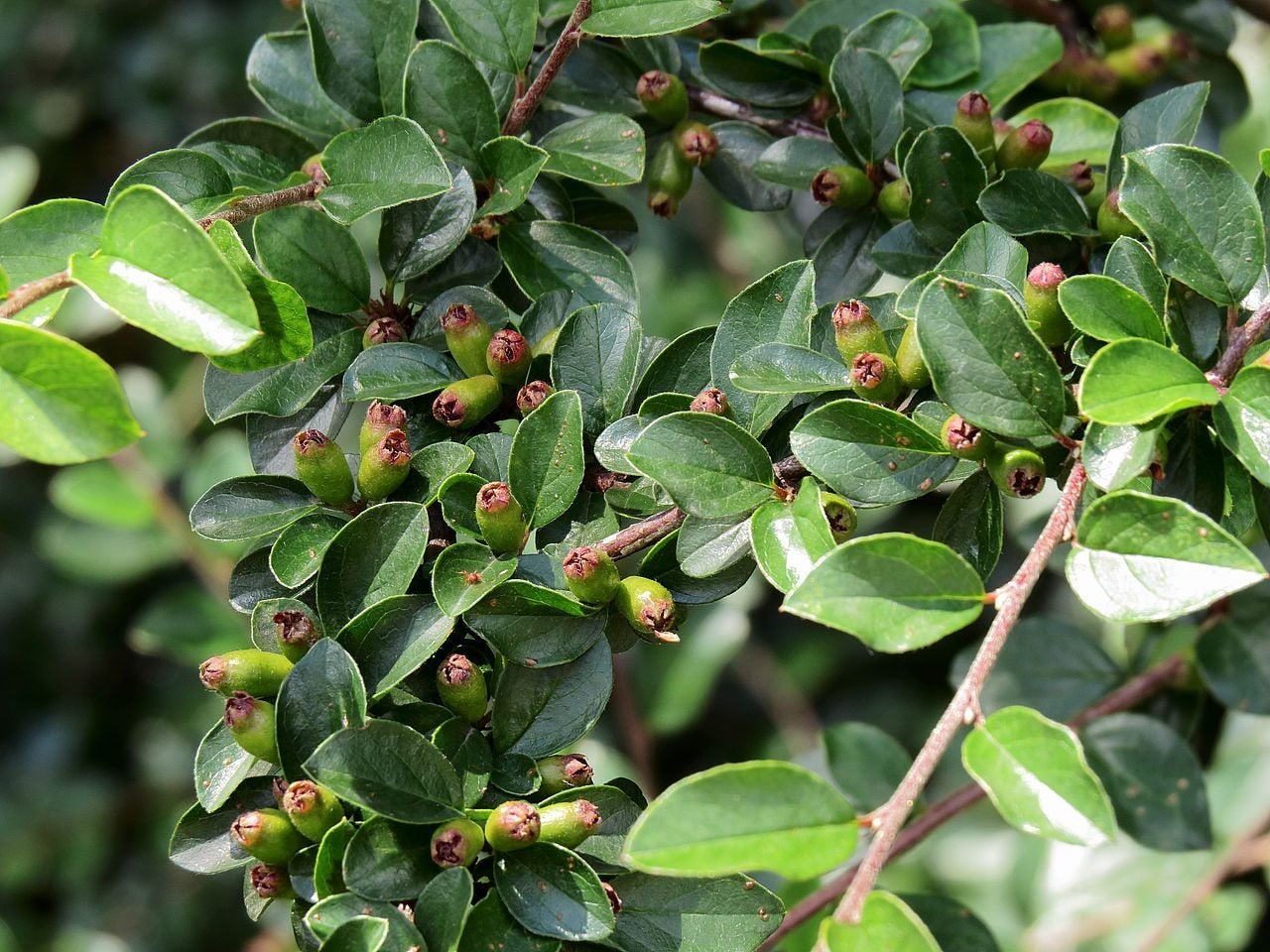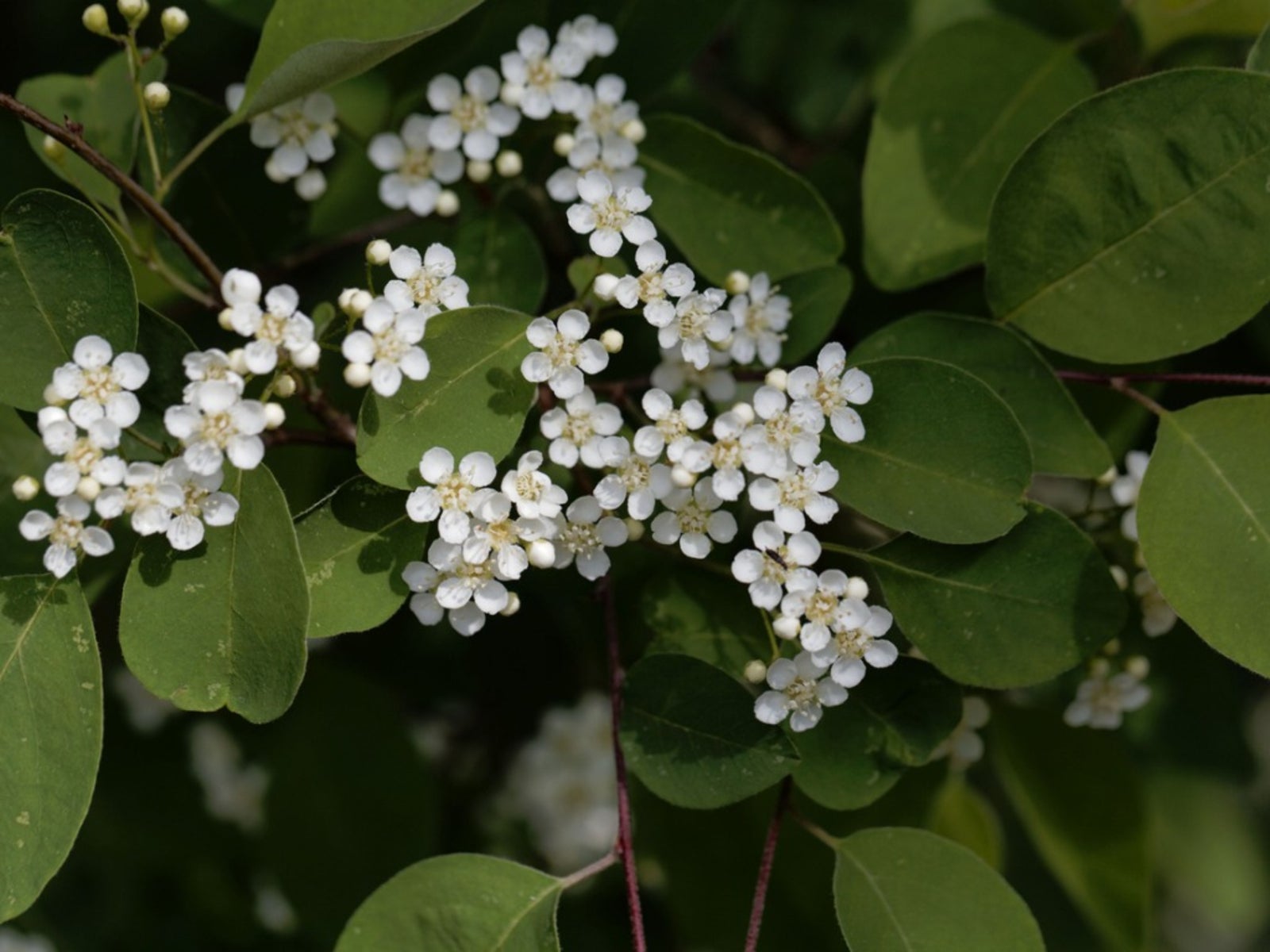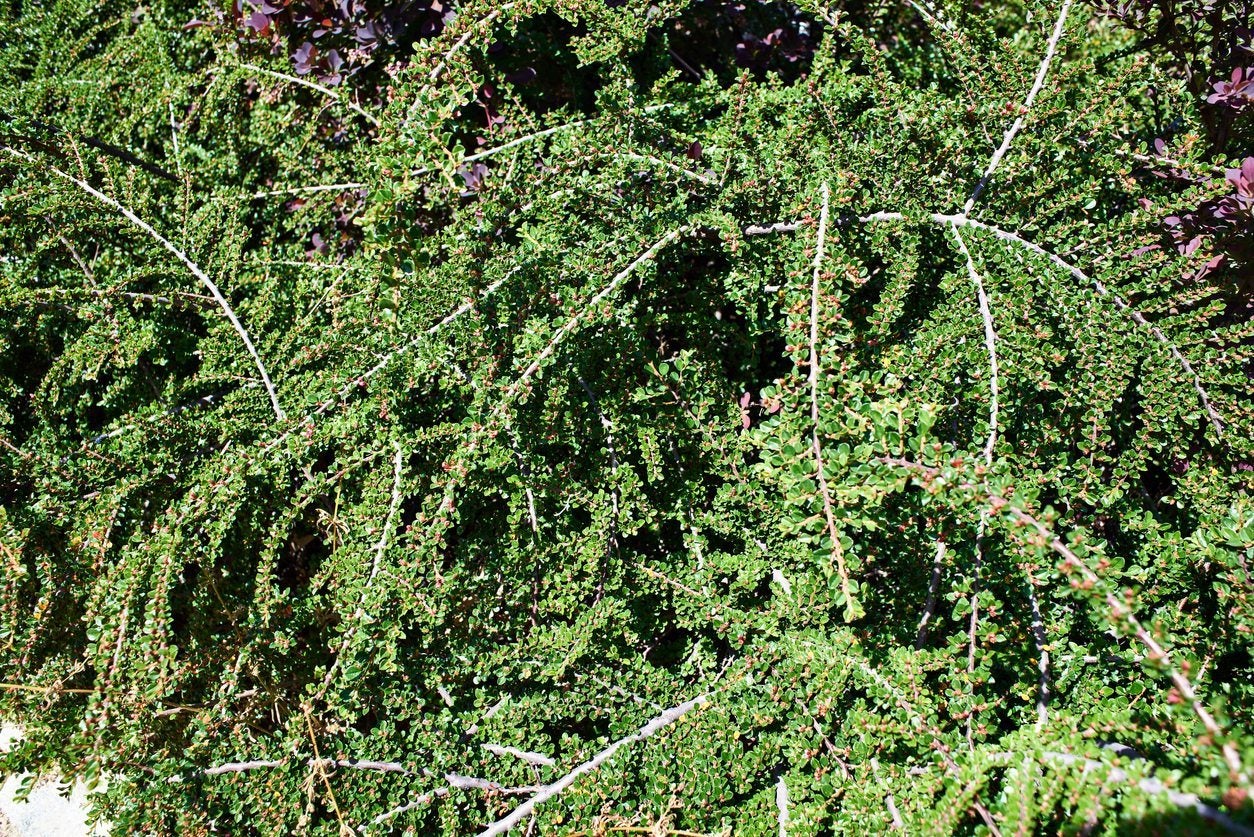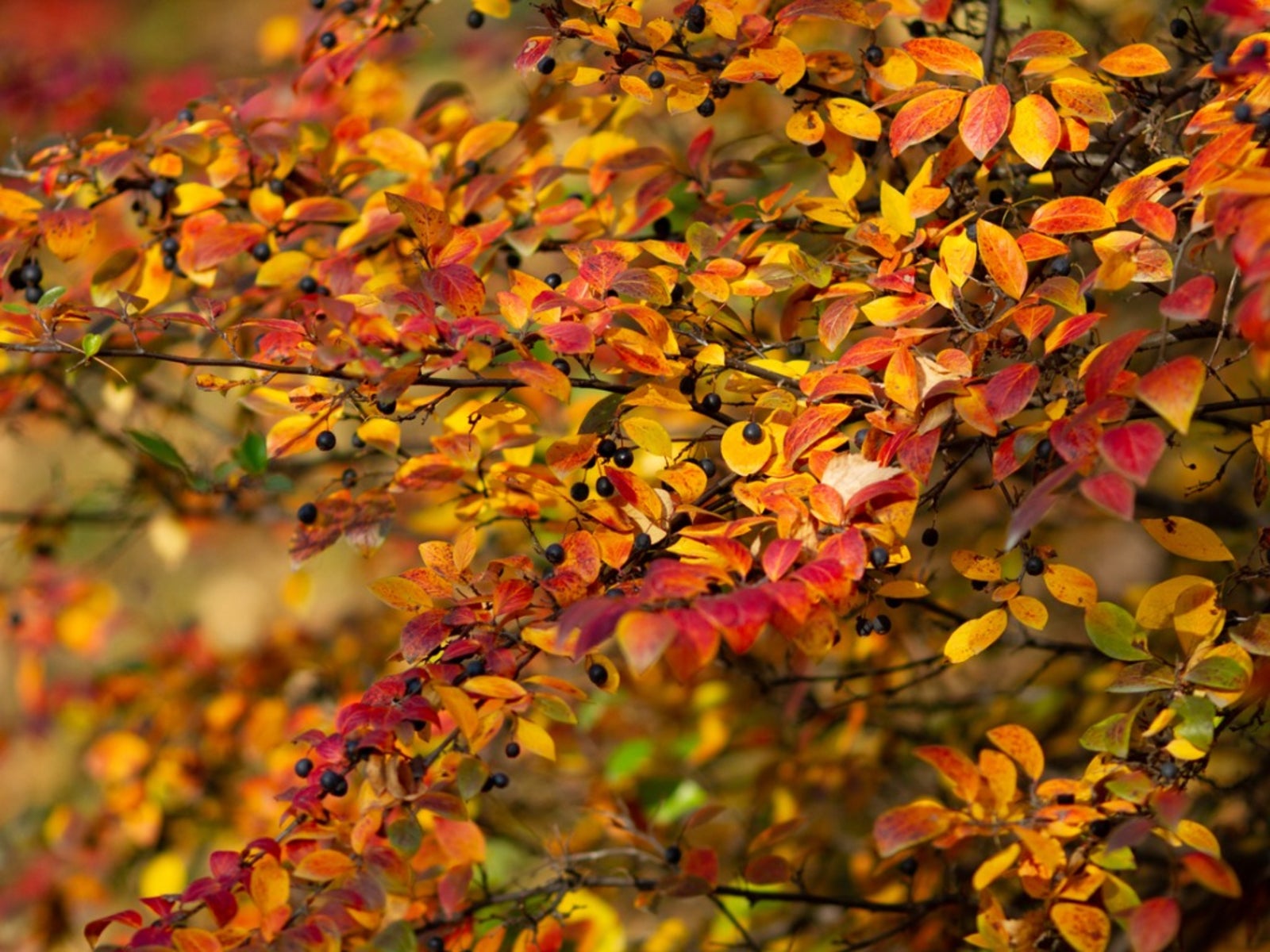Spreading Cotoneaster Info: How To Grow Spreading Cotoneaster Plants


The spreading cotoneaster is an attractive, flowering, medium-sized shrub that is popular as both a hedge and specimen plant. Keep reading to learn more about spreading cotoneaster care and tips for growing spreading cotoneaster shrubs in the garden and landscape.
Spreading Cotoneaster Info
Spreading cotoneaster plants (Cotoneaster divaricatus) are native to central and western China. They are very tolerant of the cold and are hardy down to USDA zone 4. They reach a mature height of 5 to 7 feet (1.5-2 m.), with a spread that is equal or slightly greater. The shrubs have a distinctive growing pattern that earns them their name, with branches that grow horizontally for several feet (1 to 2 m.) before sweeping slightly downwards. These branches tend to reach right down to the ground. The leaves are glossy and dark green, turning attractive shades of yellow, red, and purple in autumn before eventually dropping. Attractive spring clusters of small, pink flowers give way in autumn to numerous bright red berries that are very eye catching and last through early winter.
How to Grow Spreading Cotoneaster Shrubs
Spreading cotoneaster care is relatively easy. This cotoneaster plant likes full sun to partial shade and moist, well-drained soil. It is extremely tolerant of less than ideal conditions including poor soil, alkaline soil, salt, drought, wind, and soil compaction. Because of this, it is well suited to urban environments. It is also very resistant to pests and diseases that are known to affect other varieties of cotoneaster, making it an excellent choice over its problem-prone cousins. This cotoneaster can withstand heavy pruning and works well as a hedge, though many gardeners choose to leave it untrimmed because of its unique spreading habit. This, paired with its attractive, bright red berries, make the plant a good choice for a specimen shrub in the landscape.
Gardening tips, videos, info and more delivered right to your inbox!
Sign up for the Gardening Know How newsletter today and receive a free copy of our e-book "How to Grow Delicious Tomatoes".

The only child of a horticulturist and an English teacher, Liz Baessler was destined to become a gardening editor. She has been with Gardening Know how since 2015, and a Senior Editor since 2020. She holds a BA in English from Brandeis University and an MA in English from the University of Geneva, Switzerland. After years of gardening in containers and community garden plots, she finally has a backyard of her own, which she is systematically filling with vegetables and flowers.
-
 Looking For Plants To Give You The Soft And Fuzzies? Try These 5 Fuzzy Leaf Plant Options
Looking For Plants To Give You The Soft And Fuzzies? Try These 5 Fuzzy Leaf Plant OptionsLovers of texture, drama, silver foliage and tactile plants will adore these special sensory garden additions. These fuzzy leaf plant options will leave you all aglow
By Susan Albert
-
 Get Ready For A Summer Of Hummers! Grow These Full Sun Hummingbird Plants and Flowers
Get Ready For A Summer Of Hummers! Grow These Full Sun Hummingbird Plants and FlowersIf you’re lucky enough to enjoy a sunny backyard, make sure you are maxing out on your pollinator opportunities and grow these full sun hummingbird plants and flowers
By Tonya Barnett
-
 Many-Flowered Cotoneaster Shrub Info - Growing Many-Flowered Cotoneasters
Many-Flowered Cotoneaster Shrub Info - Growing Many-Flowered CotoneastersIf you’re looking for a sprawling, large shrub with good visual interest all year-long, consider many-flowered cotoneaster. This species of cotoneaster is a shrub that grows quickly and produces interesting foliage, spring flowers, and fall berries.
By Mary Ellen Ellis
-
 Cotoneaster Pruning Guide – When Should You Trim Cotoneaster Shrubs
Cotoneaster Pruning Guide – When Should You Trim Cotoneaster ShrubsCotoneaster pruning is different depending on the type of plant you have in your backyard, although the goal for all varieties is to follow its natural form. If you want to learn how to prune cotoneaster, you've come to the right place. Click here for tips on cutting back cotoneaster.
By Teo Spengler
-
 What Is Hedge Cotoneaster: Learn About Hedge Cotoneaster Care
What Is Hedge Cotoneaster: Learn About Hedge Cotoneaster CareWhether you're looking for a low sprawling variety or a taller type for a dense hedge, there is a cotoneaster that will meet your needs. In this article, we will discuss hedge cotoneaster plants. What is hedge cotoneaster? Click here for the answer.
By Darcy Larum
-
 Cranberry Cotoneaster Facts: Learn How To Grow A Cranberry Cotoneaster
Cranberry Cotoneaster Facts: Learn How To Grow A Cranberry CotoneasterGrowing cranberry cotoneaster brings a low, lovely splash of color to the backyard. They bring with them a spectacular fall fruit display, a gracious plant habit, and clean, bright foliage. These plants make great groundcover but can also serve as short hedges. Learn more here.
By Teo Spengler
-
 How To Grow Cotoneaster: Caring For Different Types Of Cotoneaster
How To Grow Cotoneaster: Caring For Different Types Of CotoneasterWhether you?re looking for a 6-inch ground cover or a 10-foot hedge plant, cotoneaster has a shrub for you. Growing cotoneaster is a snap, and you can learn more about the plant's care in this article.
By Jackie Carroll